Uncover Lyon's vibrant flavors and culinary gems with our expert guides. Plan an unforgettable trip now!
Read more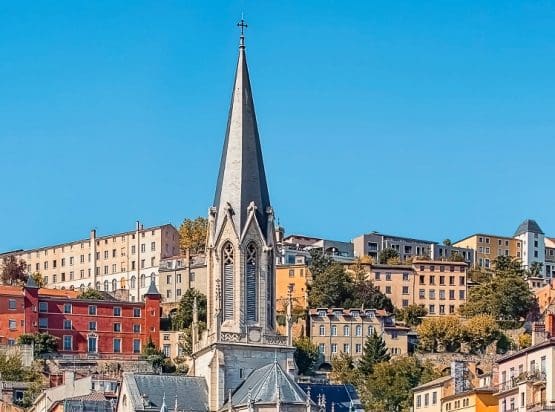
EXPLORE ALL OUR RHôNE VALLEY WINE REGION GUIDES
Last updated: April 4, 2025
Hermitage is a living legend in the northern Rhône Valley. It competes with Côte Rôtie for the title of the world’s greatest expression of the Syrah grape: rich and profound wines with abundant ripe tannin. Indeed, Hermitage builds red wine for the long haul – even bottles from the mid-20th century still dazzle us with their freshness, incredible perfume, and astounding depth.
Yet, despite popular belief, Hermitage is not a homogeneous appellation. It also produces a growing volume of exceptional white wine based on a potent blend of Marsanne and Roussanne. Whisper it: some actually prefer Hermitage Blanc to the red. But many would regard that particular view as sacrilegious!
Discover More About French Wine
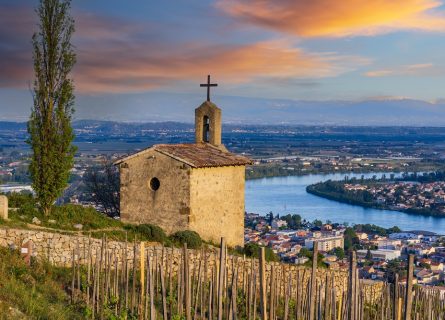
Few vineyards in the Rhône have a rich and complex history like Hermitage. After Greek mariners founded a trading post in Massilia (Marseille) in 600 BC, vines started to appear in Provence and along the banks of the Rhône. This extremely valuable piece of real estate continued to prosper following Julius Caesar’s conquest in the last century BC.
The Romans established an important military base to the north of Hermitage, known as Lugdunum (Lyon). This gateway to the Alps and the Rhône Valley succeeded on all fronts: it was a major center of trade and commerce and an important wine producer in the Western Roman Empire. Meanwhile, in Roman times, people knew the town of Tain l’Hermitage as Tegna. Pliny the Elder and Martial celebrated its wines.
Turmoil and Transformation
However, Rome’s authority in Western Europe disintegrated in the 5th century, paving the way for centuries of conflict and political upheaval. Indeed, during the Dark Ages, the Visigoths, Arabs, and Burgundians invaded Gaul several times until the Franks drove them out of southern France.
The northern Rhône subsequently became a territory of Comte Boso of Provence in the 9th century, arranged by the Frankish king Charles II the Bald. In 1032, however, it became part of the vast Holy Roman Empire.
Legend of the Hermit
This era witnessed the region’s rebirth of viticulture on a large scale, managed and organized by the Catholic Church. In the 13th century, a crusading knight called Gaspard de Stérimberg built a refuge high up on the famous hill of Hermitage, where he spent his final days, or so the legend says, living as a hermit (ermite in French).
Thus, the late Middle Ages saw the region gain recognition as Hermitage, and it has long been celebrated as one of France’s greatest wines.
Enduring Prestige and Appellation Status
In the 18th and 19th centuries, the Bordeaux establishment used locally grown Syrah to ‘beef up’ its wines. Reportedly, the wines of Hermitage greatly impressed both Louis XIII and Louis XIV, as well as the Russian Tsars.
Notwithstanding the phylloxera epidemic of the late 1800s, Hermitage’s popularity has scarcely altered over the past three hundred years. Awarded appellation status in 1937, Hermitage has become a flagship for the northern Rhône and its delectable red wines.
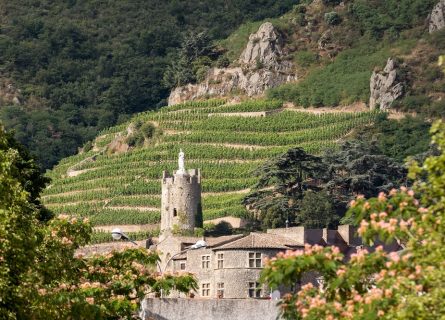
The majestic hill of Hermitage is a Holy Grail for aficionados of the Syrah grape. Who could resist these powerful, deeply colored, and utterly beguiling red wines? Moreover, unlike the neighboring region of Crozes-Hermitage, virtually all the available land has been planted to vines in this compact appellation.
As a result, the supply of this venerable wine will never increase by any significant degree in the 21st century. This may go some way to explaining Hermitage’s immense fame and popularity, which has endured since the days of Louis XIV.
Unique Terroir
The northern Rhône Valley, centered upon the pretty town of Tain-l’Hermitage, situates the area under vine. Vineyards planted with (mainly) red and white varieties cover just 140 hectares and enjoy a spectacular position overlooking Tain and the river. Indeed, these steep slopes are among the most privileged climats in the valley, located on the river’s left bank with a south-facing aspect.
The vines are protected from harsh cold winds from the north and cultivated on exceptional granite soils. This results in a free-draining terroir that retains essential heat under the vine canopy. This warmth then slowly releases as the day progresses, helping to produce small berries of highly concentrated fruit.
Labor of Love
Rising to approximately 350 meters above sea level, the slopes of Hermitage are not quite as death-defyingly steep as those of Cote Rotie. Nevertheless, mechanization and machine-harvesting are simply impossible in Hermitage. This is one of the reasons why the average retail price is so high. To create just one bottle of Hermitage requires a great deal of hard – and costly – work, not least when it comes to pruning, green harvesting, and the annual battle against soil erosion.
Evolution of Hermitage Wines
Winemakers in Hermitage traditionally blended grapes from different subzones in the region, fashioning a house style that nonetheless reflected the vagaries of a particular vintage. Yet there has been a strong cultural shift toward terroir expression over the past twenty years, inspired by the Burgundians.
Thus, growers are increasingly marketing single-site wines that display the vineyard name on the bottle. The most famous climats include Beaume, Bessas, L’Hermite, Raucoule, Muret, and Lauds.
Meanwhile, some areas also contain decomposed flint, sand, and limestone, although granite remains the predominant soil type in the appellation. That fact, combined with subtle variances in exposition and altitude, ensures that one bottle of Hermitage can taste very different from another.
In that sense, the region bears a strong comparison with the Cote d’Or, where differences in terroir are celebrated (and indeed promoted) to consumers. Critics generally regard the hallowed vineyards of Beaume and L’Hermite as Hermitage’s unofficial ‘Grand Crus,’ responsible for producing some of the appellation’s finest reds: fragrant with elegant tannins and good acidity.
They are quite distinct from the structured, meaty wines of Bessard; Muret and Raucoule also yield very aromatic, concentrated Syrah. Raucoule also grows a relatively small amount of Marsanne and Roussanne, used to make Hermitage Blanc.
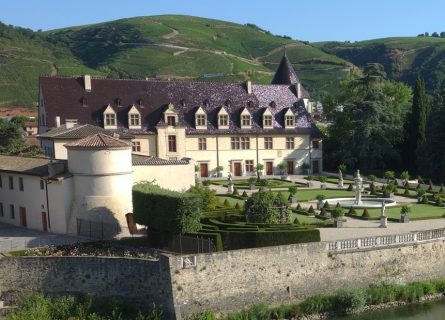
People often employ the adjective “powerful” to describe the wines of Hermitage, and not without good reason! Granted, there are variances in style due to terroir and winemaking; however, the vast majority of red Hermitage is undeniably rich in fruit and extract.
Like the best Syrahs of Australia and California, it can assault your senses with an aroma and flavor that is almost overwhelming. This is particularly true of young Hermitage, where firm tannins can subjugate the fruit for at least 2-3 years after release. Yet nothing can restrain its exquisite perfume and gorgeous fruit once those tannins begin to soften in bottle.
Hermitage’s graceful maturity reveals a mosaic of tertiary flavors: coffee, damson, wood smoke, and leather. Without question, it is a wine that belongs in the same category as Domaine de la Romanée-Conti and Chateau Margaux – the crème de la crème of Gallic winemaking and terroir.
The Unique Blend of Tradition and Innovation
Of course, the backbone of all Hermitage is the Syrah grape. Growers are entitled to incorporate up to 15 percent Marsanne/Roussanne into the blend, enhancing its perfume and freshness. In the 20th century, this was standard practice in many domaines.
However, using white varieties in Hermitage is less common today, as winemakers increasingly favor the Syrah grape’s pure, unadulterated expression. Crushing whole bunches with their stems is the height of fashion—growers believe stems can add valuable structure to the wine. Other winemakers prefer a partial destem, while Marcel Guigal traditionally added destemmed whole bunches to the vat.
The Art of Winemaking in Hermitage
Fermentation and maceration are usually long-drawn-out affairs in Hermitage, typically conducted in stainless steel or oak/concrete vats. Long vinifications and macerations (at least three weeks) are partly responsible for the strength and depth of flavor one finds in Hermitage.
However, much ultimately depends on the quality of the fruit. Every great Rhône winemaker would agree with that.
A Divisive Choice with Impactful Results
The subject of oak maturation, however, remains very divisive in Hermitage. Guigal is a famous proponent of aging in new barrique, although the percentage of new oak has been toned down in recent years.
Many growers favor aging in one- to two-year-old casks, arguing that 100% new wood interferes with the flavor of Syrah and obscures terroir character. In our experience, a balance of new and used oak delivers the best results: structured and complex wines that maintain their essential fruit and purity of expression.
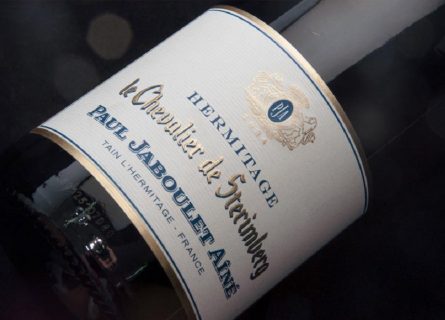
It is natural to think of Hermitage as primarily a red wine producer. Indeed, growers dedicate over two-thirds of the available land to cultivating the Syrah grape, which is transformed into one of France’s most prestigious and expensive red wines.
Yet local growers have always admired (and even shown a heightened preference for) their enigmatic whites, hitherto ignored by many consumers. But demand is increasing as sommeliers and buyers hunt for better-value alternatives to white Burgundy. So, too, has the quality risen dramatically over the past 15 years – perhaps thanks to climate change, resulting in ever-riper grapes.
Still, even the most opulent expression of Hermitage Blanc retains enough acidity to prevent the experience from becoming cloying. It showcases a myriad of exotic flavors that never seem to fade.
The Unrivaled Quality of Hermitage Blanc
Most of my experience, however, comes from blind tastings; this allows an objective evaluation of any wine, free from label bias. Nonetheless, my assessment of this underrated style remains the same. In truth, I prefer it to the red wines made on this ancient hill, which is not to dismiss hundreds of years of tradition.
Yet the world is full of superlative red wines—single-varietal and blends—that showcase this singular grape’s wonderful qualities. It is rare to come across such a perfect union of Marsanne and Roussanne anywhere else. Much like Barolo, Hermitage Blanc has no actual peers or competitors.
The Delicate Balance of Aging Hermitage Blanc
Of course, not every single bottle will live up to the hype. Like many whites, Hermitage Blanc can be utterly ruined by an excess of new oak – a maximum of 20-30 percent is usually about right. Yet, if handlers manage the aging regime sensitively, this beguiling concoction can deliver much pleasure.
In its youth, white Hermitage is renowned for its acacia and white flower bouquet. It develops a delicate nutty flavor with bottle age, with brioche notes and honeysuckle on the finish. The best examples are hauntingly beautiful and complex white wines with a deep golden color that I find irresistible. If you like Condrieu, I guarantee that you’ll love Hermitage Blanc.
Uncover the allure of Marsanne grape variety. From its traditional role in Rhône blends to the new wave of single-varietal Marsanne wines.
Find out moreLearn about Roussanne, the elegant white grape native to Rhône. Often blended with Marsanne, explore its unique qualities and rich heritage in our guide.
Find out moreSyrah is dark-skinned and perhaps the most underrated of the 'noble' red grape varieties.
Find out moreThe region’s proximity to Lyon heavily influences the culinary traditions of the northern Rhône – France’s second capital of fine gastronomy after Paris. Thus, in the lively bistros of Vienne and Valance, you can expect a generous selection of rich and hearty dishes. Not least among these are some delicious cured meats, freshwater fish, truffles, braised beef in wine, and potatoes slowly cooked in butter and seasoned with herbs. A healthy range of local vintages – by the bottle and glass – will turn this local feast into a banquet.
A Gastronomy Guide to the Cuisine of the Rhone: Read more
If you would like us to customize an exclusive luxury tour, contact us and let us know your travel plans. We offer luxury food and wine tours for private groups of a mininium two guests. In addition, all of our private, chauffeured tours are available year-round upon request.

